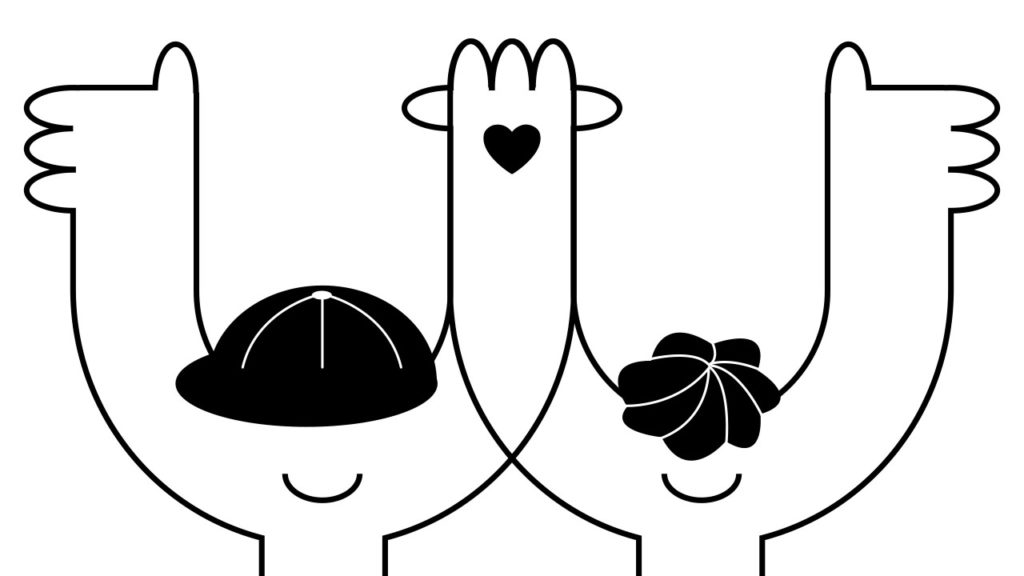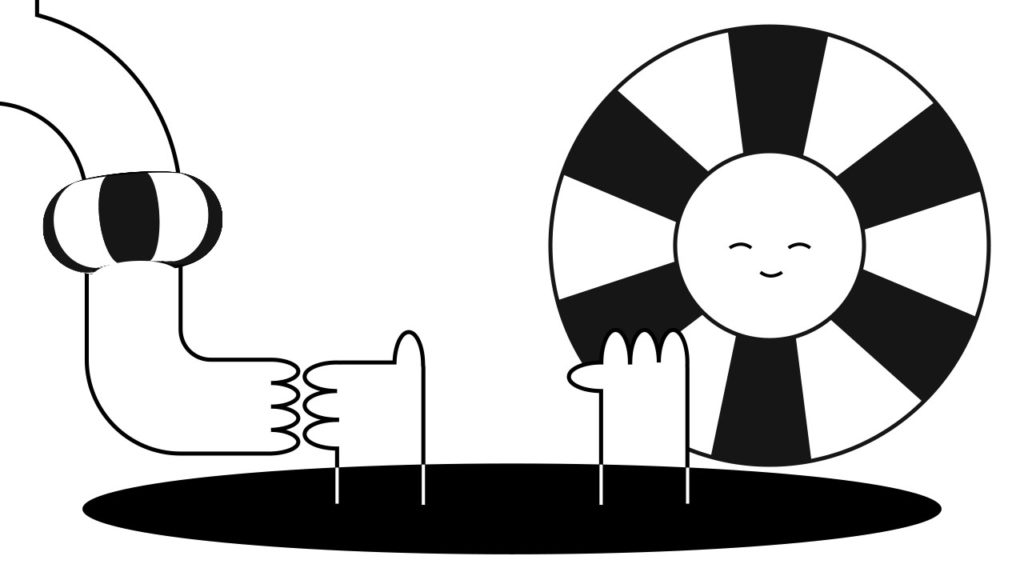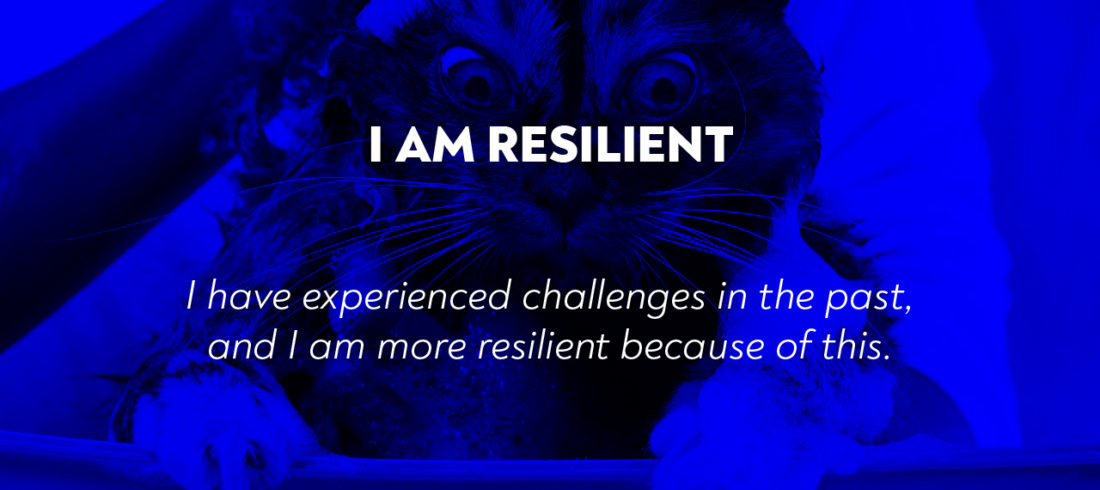
Freelancing pozwala poznać jednych z najwspanialszych ludzi, jakich można spotkać. Czasami współpraca z klientem przypomina bardziej robienie fajnego projektu szkolnego z przyjacielem niż pracę. Innym razem współpraca z klientami sprawia, że można oszaleć. I to całkowicie normalne.
Zazwyczaj w trakcie współpracy albo Ty, albo Twój klient zaczynacie się coraz bardziej irytować. Dlaczego? W większości przypadków dzieje się tak, ponieważ… popełniasz błędy. Jak powiedział William Arthur Ward: „Błądzić jest rzeczą ludzką”. My dodajemy: „Błądzić to być freelancerem”.
Chociaż błędy mogą wiele nauczyć, czasami można ich uniknąć. Warto uczyć się na doświadczeniach innych. Na szczęście (dla Ciebie) my popełniliśmy całą masę błędów! To częściowo dzięki nim jesteśmy teraz tak dobrzy w tym, co robimy (taka skromna przechwałka). Pozwól więc, że pokażemy Ci najczęstsze błędy popełniane przez freelancerów i klientów oraz sposoby, jak ich unikać.
Jeśli się nad tym zastanowić, błędy dzielą się na dwie główne kategorie – te popełniane przez Ciebie oraz te popełniane przez klienta. I właśnie o nich wszystkich chcemy porozmawiać. Oto jak współpracować z klientem i nie zwariować.

Błędy po Twojej stronie
Czasami trzeba po prostu przyznać przed sobą samym, że to nie klient jest problemem – to Ty. I to w porządku – w końcu jesteśmy tylko ludźmi. Popełnianie błędów jest naturalne. Jednak jeśli nie chcesz stracić klientów, musisz je naprawić. A jaki jest pierwszy krok w rozwiązywaniu problemu? Oczywiście, jego rozpoznanie. Oto 4 najczęstsze błędy, jakie zdarza się popełniać freelancerom.
1. Praca za darmo
„Czy ludzie naprawdę to robią?” – zapewne już zadajesz sobie to pytanie. Cóż, mogłoby Cię to zaskoczyć. Wielu freelancerów, zwłaszcza na początku, postrzega darmową pracę jako jedyny sposób na zdobycie pierwszych klientów. W naszym wcześniejszym artykule omówiliśmy, jak przerwać błędne koło polegające na potrzebie doświadczenia, by zdobyć doświadczenie. Oferowanie swoich usług za darmo wcale w tym nie pomaga.
Co początkujący freelancerzy muszą zrozumieć, to fakt, że osoby poszukujące usług freelancera CHCĄ za nie płacić. Nie szukają najtańszego rozwiązania, lecz najlepszego – czy to pod względem jakości, czy stosunku ceny do wartości. Proponowanie wykonania pracy za darmo jedynie pokazuje, że desperacko potrzebujesz projektów. A to nie robi dobrego wrażenia. Doceniaj siebie, a Twoja praca zostanie doceniona przez innych.
Za niskie stawki
Najłatwiejszy sposób na wypalenie zawodowe? Zaniżanie swoich stawek. To jeden z najczęstszych błędów popełnianych przez freelancerów. Konkurencja w branży jest duża, a wielu początkujących nie ma pojęcia, ile wynoszą standardowe stawki innych. W efekcie zaczynają wątpić w swoje umiejętności i nie doceniają własnej pracy.
Pora na dobrą wiadomość – niezależnie od tego, co oferujesz, z dużym prawdopodobieństwem możemy stwierdzić, że zawsze znajdzie się ktoś, kto zrobi to taniej. Chyba że proponujesz swoje usługi za darmo (co, jak już wiesz, jest jednym z największych ostrzeżeń dla klientów). Nie masz wpływu na to, jak niskie stawki oferują inni – i nie powinieneś próbować z nimi konkurować w ten sposób.
Jeśli pracujesz za mniej, niż Twoja praca jest warta, wypalenie zawodowe to tylko kwestia czasu. Frustracja spowodowana niskimi zarobkami wpłynie na jakość Twojej pracy, a w skrajnych przypadkach może doprowadzić do utraty klientów. Dlatego, szukając kolejnego projektu, uwierz w swoje umiejętności i podnieś swoją standardową stawkę o 5-10%. Taki krok pomoże Ci przełamać psychologiczną barierę zaniżania własnej wartości. Zobaczysz, jak nagle Twoja praca stanie się bardziej satysfakcjonująca!
2. Przepracowanie/przekraczanie oczekiwań klienta
Przyznajemy się! Kiedy zaczynaliśmy, zdarzało się, że robiliśmy więcej, niż klient oczekiwał, by sprawiać wrażenie bardziej zaangażowanych i pracowitych. Niestety, często spotykaliśmy się z chłodną reakcją w stylu: „To nie jest to, czego chciałem”. Czasem chcemy zrobić coś ekstra dla klienta, pokazać, że zależy nam na projekcie i jesteśmy gotowi włożyć dodatkowy wysiłek. Ale klient zapłacił jedynie za to, na co się umówiliśmy.
Oszczędź sobie czasu i frustracji. Zamiast wykonywać dodatkową pracę, skoncentruj się na tym, by to, co zostało uzgodnione, było wykonane na najwyższym poziomie. To przyniesie Ci znacznie lepsze efekty i buduje solidną reputację, zamiast tracić energię na działania, których klient nawet nie oczekiwał.
3. Brak organizacji
Kiedy miał być ten deadline? A tak, zapisałeś go na kawałku papieru… Tylko gdzie on teraz jest? Zaczynasz panikować, gorączkowo przeszukując całe biurko. W końcu go znajdujesz! Patrzysz i nagle zamierasz z przerażeniem – termin był… wczoraj.
Największa odpowiedzialność, jaka spada na freelancerów, to potrzeba samodzielnego zorganizowania się. Znajdź system, który pozwoli Ci śledzić wszystkie terminy, etapy projektu, zadania do wykonania i inne ważne szczegóły. Monitoruj faktury, które musisz przygotować, oraz czas poświęcony na każde zlecenie. Bez względu na wszystko – dbaj o organizację.
Używaj narzędzi takich jak kalendarze, aplikacje do zarządzania projektami czy nawet proste listy zadań. Kluczem jest systematyczność – chaos w organizacji pracy to pierwszy krok do opóźnień, frustracji i utraty klientów. Zachowanie porządku to nie tylko komfort psychiczny, ale także sposób na budowanie profesjonalnej reputacji.
4. Brak precyzyjnych ustaleń
Podczas omawiania warunków z klientem nigdy niczego nie zakładaj. Nie zostawiaj miejsca na dowolne interpretacje. Przykład? Umawiasz się na termin realizacji projektu na 1 czerwca. Nadchodzi ten dzień, a klient dzwoni do Ciebie o północy z pytaniem: „Kiedy mogę się spodziewać finalnej wersji?”. Odpowiadasz: „Do końca dnia”. Na co klient z wyraźnym rozdrażnieniem: „Myślałem, że będzie gotowe o 12 w nocy”.
Ten problem można było rozwiązać na samym początku:
„A co z terminem? Czy 1 czerwca będzie odpowiedni?”
„Do końca dnia?”
„Liczyłem, że będzie gotowe do północy”
Krótka rozmowa, jasne ustalenie wzajemnych oczekiwań i stworzenie wspólnego zrozumienia to klucz do uniknięcia nieporozumień. Precyzja na etapie planowania pozwala oszczędzić stres i frustrację obu stronom.

Błędy po stronie klienta
Freelancerzy popełniają błędy – to fakt, z którym trudno się pogodzić. Ale jeszcze trudniej jest zaakceptować, że… klienci też popełniają błędy! Czasami problem nie leży po Twojej stronie. Twoim zadaniem jest jednak nauczyć się właściwie reagować na te sytuacje. Przejdźmy więc przez najczęstsze błędy, jakie zdarzają się klientom, i sposoby radzenia sobie z nimi.
Nierealistyczne oczekiwania
Jak powinien być zrealizowany projekt? Najwyższa jakość, najniższa cena, a termin? Na jutro. Oczywiście, przesadzamy, ale w tym żarcie kryje się ziarno prawdy – wielu klientów nie rozumie, że niektóre rzeczy wzajemnie się wykluczają.
Kiedyś, dla żartu, stworzyliśmy „przełącznik”, który pozwalał wybrać, czy projekt ma być wysokiej jakości, szybko wykonany, czy tani. Można było wybrać tylko dwie opcje jednocześnie.
To lekki żart, ale doskonale obrazuje rzeczywistość. Jako freelancer musisz umiejętnie tłumaczyć klientom, że nie da się osiągnąć wszystkiego naraz. Jeśli klient chce najwyższej jakości, musi liczyć się z dłuższym czasem realizacji lub wyższą ceną. Szczera, profesjonalna komunikacja w takich sytuacjach jest kluczem do uniknięcia frustracji po obu stronach.
Niekończące się poprawki
„Czy możesz trochę powiększyć tekst?”, „A kolory mogą być trochę jaśniejsze?” – skrupulatnie wprowadzasz wszystkie zmiany. Ale jak hydra, jedna poprawka prowadzi do trzech kolejnych. Nagle projekt, który miał zająć 10 godzin, pochłania 12, a cena pozostaje bez zmian. W praktyce zaczynasz tracić pieniądze.
Dobrą praktyką jest wprowadzenie od samego początku jasnych zasad dotyczących poprawek. Określ, ile rund poprawek wchodzi w cenę projektu, oraz ustal dodatkową stawkę za kolejne zmiany. Taki zapis w umowie lub porozumieniu oszczędzi Ci czas, pieniądze i frustrację. Dzięki temu klient z góry wie, czego może się spodziewać, a Ty unikasz nieprzewidzianych sytuacji.
Brak zrozumienia perspektywy freelancera
Często, choć niekoniecznie z ich winy, klienci po prostu nie rozumieją perspektywy freelancera. Trudno ich za to winić – w końcu sami nie pracują w ten sposób. Dla niektórych napisanie 150-słowowego posta nie wygląda jak zadanie na dwie godziny. Nierzadko nie rozumieją, że polecenie typu „czy możesz trochę poprawić tę grafikę?” jest zbyt ogólnikowe. Zdarza się, że nie widzą sensu w tym, dlaczego projekt UI strony internetowej kosztuje tak dużo.
I tutaj wkraczasz Ty. Twoim zadaniem jest jasno i przejrzyście przedstawić swoją perspektywę klientowi. Co może pomóc?
- Dokładne wyjaśnienie etapów pracy: Opisz każdy etap procesu, każdą czynność składającą się na zadanie i uzasadnij wycenę. Na przykład:
„Przy tworzeniu kampanii na social media spędzam 2 godziny na jednym poście. Z tego 1 godzina to copywriting, który wyceniam na 50$ za godzinę, a 1 godzina to projekt graficzny, którego stawka wynosi 150$ za godzinę. Dlatego post kosztuje 200$.” - Uzasadnienie stawek godzinowych: Wyjaśnij, co wpływa na Twoje stawki – np. doświadczenie, specjalistyczne umiejętności, narzędzia, których używasz.
Najważniejsza zasada, która sprawdza się u wszystkich freelancerów: im bardziej transparentny jesteś, tym lepiej. Jasna komunikacja buduje zaufanie, pozwala klientowi lepiej zrozumieć Twoją pracę i zmniejsza ryzyko nieporozumień.

Jak nie zwariować?
Utrzymanie dobrego stanu psychicznego jest kluczowe w pracy tak stresującej, jak freelancing. Oto końcowa część: jak pracować z klientami i nie stracić przy tym zdrowia psychicznego. Po latach doświadczeń stworzyliśmy zestaw zasad, które pomagają w budowaniu udanej współpracy. Oto 5 złotych zasad współpracy z klientem:
- Ustal granice – zarówno dla siebie, jak i dla klienta – Powiedz klientowi, że nie odpowiadasz na wiadomości po godzinie 19. Określ liczbę darmowych poprawek, bądź transparentny i precyzyjny. Ale nie zapominaj o ustaleniu granic także dla siebie. Obiecaj sobie, że nie będziesz pracować po określonej godzinie, że wykonasz maksymalnie X darmowych poprawek i że będziesz szanować swój czas.
Łatwo wpaść w pułapkę robienia wszystkiego, o co poprosi klient, w dowolnym czasie i miejscu. Szanuj siebie i swoją pracę – ustal granice, których po prostu nie można przekroczyć. - Szanuj swój czas – Rozwijając poprzedni punkt – pamiętaj, że masz tylko jeden czas. To Ty decydujesz, czy spędzisz go z przyjaciółmi, czy na spóźnionym projekcie. Naucz się realistycznie szacować czas potrzebny na wykonanie zadań. Naucz się prawdziwej wartości czasu i oducz się spędzania długich godzin na niekończących się poprawkach. Czas nie jest tani – nie traktuj go, jakby był.
- Zapisuj wszystko – Żadnych ustnych umów! Jeśli coś nie zostało zapisane, traktuj to tak, jakby nie istniało (oczywiście uprzedź o tym klienta). Jedno nieporozumienie, jedno źle usłyszane słowo, a cała współpraca może się posypać. Zaletą pisemnych ustaleń jest to, że nie pozostawiają miejsca na wątpliwości, a jeśli pojawią się błędy, od razu wiadomo, kto je popełnił. Oszczędź sobie frustracji i kłótni o to, „kto co powiedział” – komunikuj się na piśmie.
- „My vs. problem”, a nie „Ja vs. klient” –
To zasada, która sprawdza się w każdej relacji. W większości przypadków Twój klient chce tego samego co Ty: płynnej współpracy i projektu zrealizowanego bez większych komplikacji. Jak mówi przysłowie, „do tanga trzeba dwojga”.
Kiedy klient zgłasza reklamację, nie traktuj tego jako ataku personalnego, lecz jako przeszkodę, którą musicie razem pokonać. Może to brzmieć banalnie, ale taka zmiana nastawienia może diametralnie odmienić Twoje podejście do konfliktów i różnic zdań. Po prostu spróbuj! - Nie bój się odpuścić – Czasami po prostu „nie jest Wam po drodze” – i to jest w porządku. Zdarza się, że klient nie jest idealnym dopasowaniem, że działacie na różnych falach i warto po prostu zakończyć współpracę i iść dalej.
Może to być przerażająca perspektywa, zwłaszcza dla początkujących freelancerów – w końcu rezygnujesz z jednego z dochodów. Ale czasami odpuszczenie daje szansę na otwarcie się na możliwości, których wcześniej nie brałeś pod uwagę. Bądź otwarty i stawiaj siebie na pierwszym miejscu.
Freelancing to nie tylko umiejętność pracy, ale także sztuka zarządzania sobą i swoimi relacjami. Trzymaj się tych zasad, a z pewnością uda Ci się pracować z klientami, jednocześnie dbając o swoje zdrowie psychiczne i zawodowe spełnienie.








